Get More Value From The Tripartite Association | PRO-MIX


Growers have always been interested in increasing crop yield and quality. Many products on the market offer ways to achieve better profitability, but few can pretend to offer a natural way to do so, yet an easier way than value-added growing media. PRO-MIX offers a wide variety of value-added growing media incorporating cutting-edge active ingredients, which have proven to give growers the return on investment they are looking for. If biologicals like mycorrhizae and Bacillus bacteria are increasingly known in horticulture, few growers understand why both microorganisms, when put in combination, are even more efficient and profitable.
In fact, mycorrhizae and Bacillus pumilus, both incorporated in AGTIV® FORTIFY™ technology work together in what we call a TRIPARTITE ASSOCIATION, which is why they both create a VALUE-ADDED COMBINATION. Let’s dig a bit more into that at a scientific level.
How Mycorrhizae and Bacillus Work
Both groups of organisms occur naturally in soils and are not genetically modified. They have been selected through a screening process for their growth-enhancing properties or disease suppression. As a reminder, here’s quick summary of the modes of action of mycorrhizae and Bacillus bacteria individually.
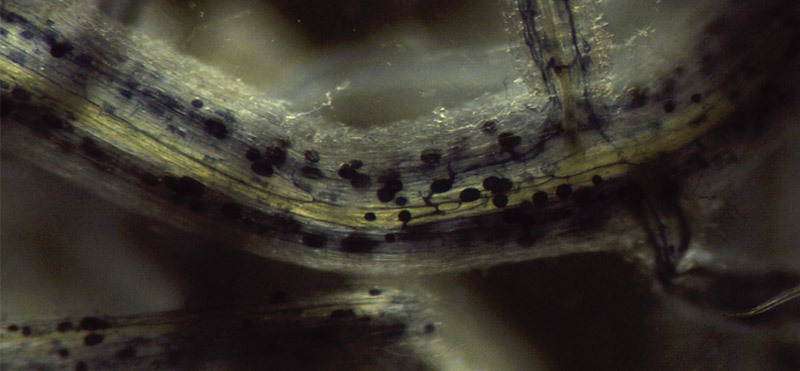
Mycorrhizae are symbioses between mycorrhizal fungi and plants. The fungus colonizes the root system of plants, where it will get the sugars and lipids necessary for its growth. Then, the fungus will develop a network of extra-root filaments (hyphae) and grow out past the root system, into the surrounding soil or soilless media environment where the plant roots are not present, to access water and nutrients to transfer them to the plant. Observed proven benefits are:
- Enhanced root system growth
- Enhanced water and nutrient uptake
- Increased plant resistance to environmental stresses (drought, compaction, salinity, low fertility)
- Reduced transplant shock
- More efficient nutrient use
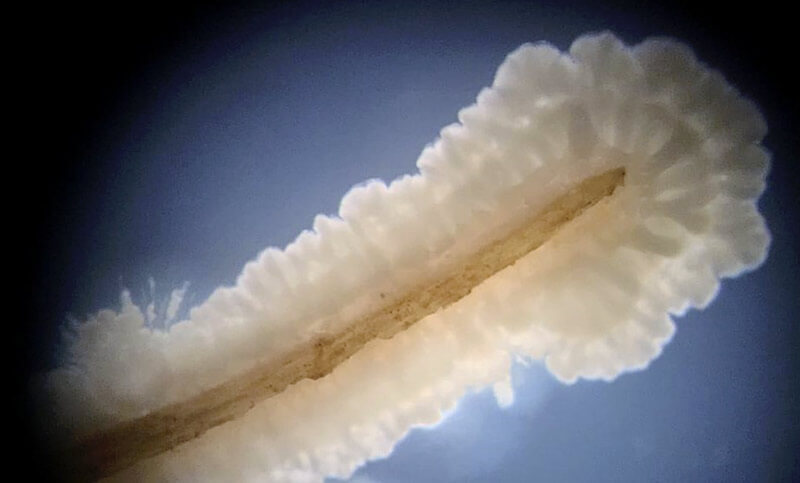
Bacillus are gram-positive bacteria which colonize plant roots. Their high motility gives them the ability to form a biofilm around the root system that ensures protection against pathogens. Some of them, like Bacillus pumilus, have antibacterial and antifungal properties on plants: by the secretion of lipopeptides (such as surfactin) which help suppress root rot diseases caused by Fusarium, Pythium and Rhizoctonia, and by inducing the plant's induced systemic resistance (ISR). They also secrete biostimulant molecules (auxins) that stimulate root growth and induce the proliferation of the root hairs to favor the absorption of nutrients and water.
Biocontrol benefits:
- Stronger plant disease resistance
- Reduced need for fungicide soil drenches
- Insecticide properties
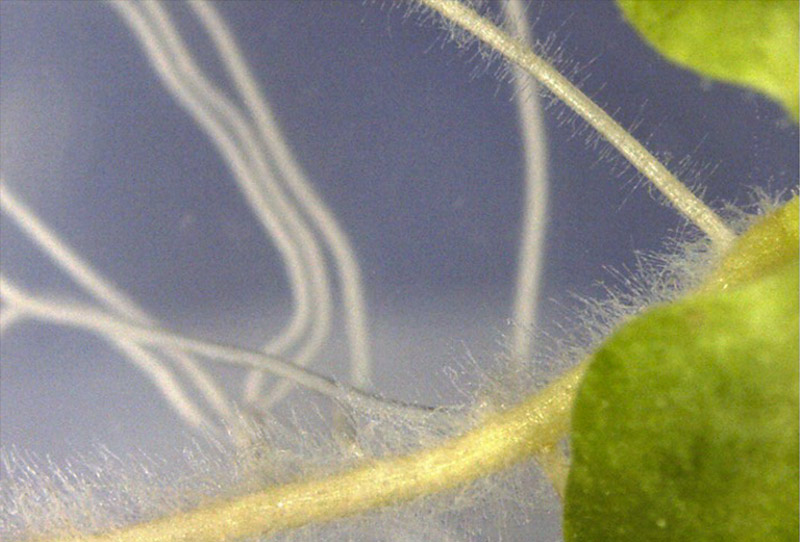
As we can see, both microorganisms have major effects on plant quality and subsequently on yield. However, putting each organism alone will provide an individual beneficial effect on plants, while combining them will make them work harder to achieve great results. Here’s why.
What Is a Tripartite Association?
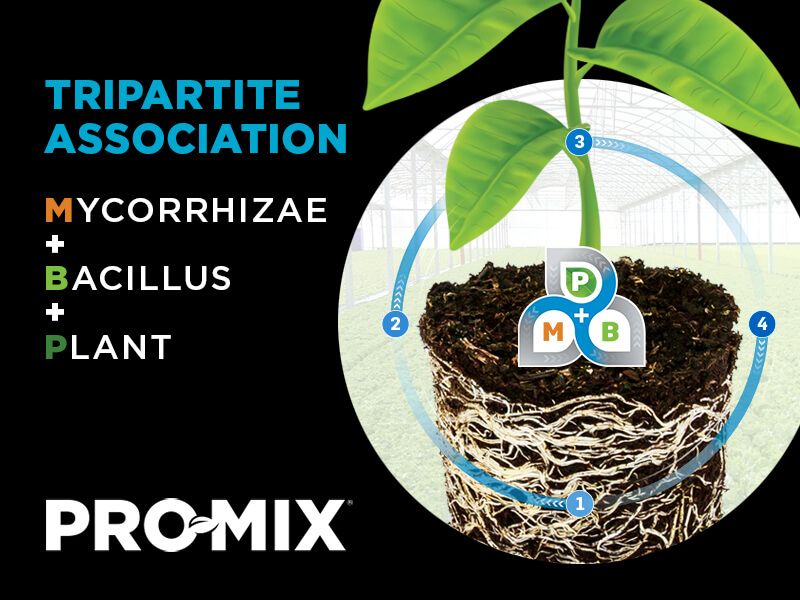
What we call the “tripartite association” is the biological interaction between MYCORRHIZAE, BACTERIA and PLANT. Each partner in this association plays a crucial role in helping other organisms thrive in the process. It is important to know that mycorrhizal fungi are obligate symbionts and need a plant to survive and complete their life cycle, compared to Bacillus bacteria which occur naturally in soils around the globe.
By enhancing root system growth and creating a network of filaments, mycorrhizae help plants with the uptake of nutrients, such as phosphorus and certain micronutrients. In exchange, the plant provides carbon to the fungus and, by extension, to the root microbiome including our Bacillus pumilus growing along the mycorrhizal hyphae. The symbiotic relationship between fungi and plants results in overall improved plant growth.
“AMF [Mycorrhizal fungi] associated bacteria may be transported along hyphae to the relevant soil volume explored, where they may enhance nutrient availability, control plant pathogens and promote plant growth.1”
Here are the steps in which we can observe this association:
- Mycorrhizal fungi colonize plants
- The plant gives carbohydrates to the fungi in exchange for water & nutrients they provide
- The hyphae explore the soil/growing media, exuding carbon along their hyphae
- Bacteria absorb this carbon and multiply along the way
- Bacteria liberate lipopeptides, hormones, and produce a biofilm
- Plant protection & stimulation effects
The key to understanding this interaction is by observing the high level of compatibility between mycorrhizae and Bacillus bacteria. As mycorrhizal hyphae can explore the growing media further than roots, helping bacteria multiply along the way, the higher and wider-spread population of bacteria will have a multiplied biostimulation and protection effect across the whole substrate.
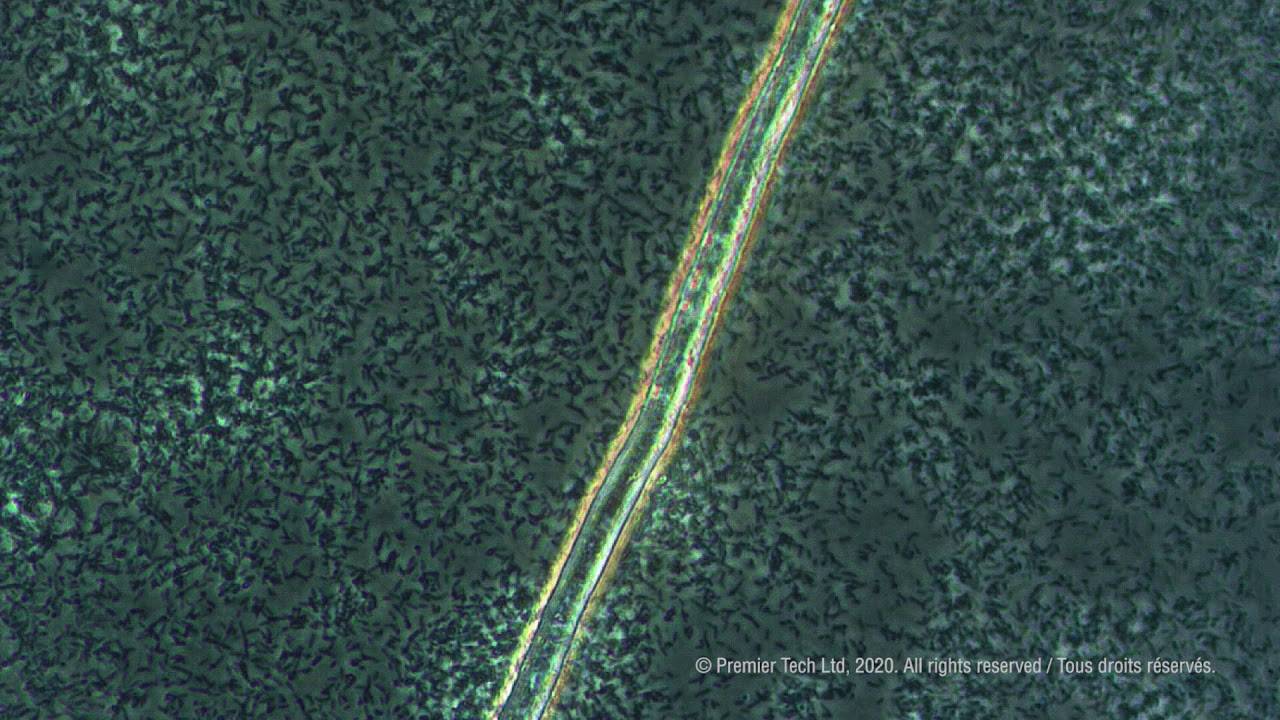
The Benefits of the Value-Added Combination
Now that we have seen and explained the biological process behind the concept, it is important to understand how the benefits from both active ingredients will improve crop quality and yield, with other documented effects on:
- Soil structure
- Stress resistance
- Insect suppression
- Mortality rate decrease
- Regulated plant growth
- Uniformity of plants in a crop
- Increased plant productivity
- etc.
Using mycorrhizae and Bacillus combined, in a single pre-mixed top-of-the-line growing medium is maximizing your chance to get optimal results, by letting active ingredients express themselves to their fullest.
Providing the best possible microorganisms for your plants may increase the expected benefits if ingredients are compatible and products are consistent.
Premier Tech, the owner and manufacturer of PRO-MIX since its beginning, has more than 40 years of expertise in biological active ingredients. Joined with state-of-the-art quality control processes in aseptic laboratories and production facilities, PRO-MIX and AGTIV make a difference for your crops with proven consistency of products, no contamination and reliable active ingredients.
Rouphael et al. Arbuscular mycorrhizal fungi act as biostimulants in horticultural crops, Scientia Horticulturae, Volume 196, 2015, pp. 91-108.